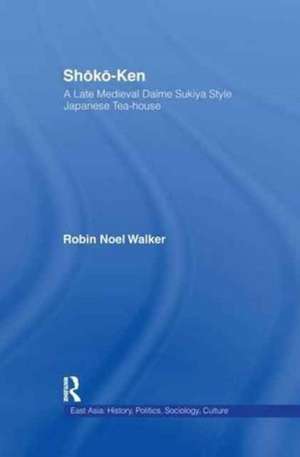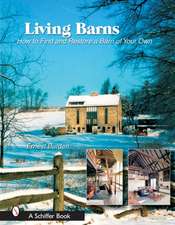Shoko-Ken: A Late Medieval Daime Sukiya Style Japanese Tea-House
Autor Robin Noel Walkeren Limba Engleză Paperback – 8 mar 2017
| Toate formatele și edițiile | Preț | Express |
|---|---|---|
| Paperback (1) | 449.63 lei 6-8 săpt. | |
| Taylor & Francis – 8 mar 2017 | 449.63 lei 6-8 săpt. | |
| Hardback (1) | 824.80 lei 6-8 săpt. | |
| Taylor & Francis – 20 sep 2002 | 824.80 lei 6-8 săpt. |
Preț: 449.63 lei
Nou
Puncte Express: 674
Preț estimativ în valută:
86.05€ • 93.43$ • 72.28£
86.05€ • 93.43$ • 72.28£
Carte tipărită la comandă
Livrare economică 22 aprilie-06 mai
Preluare comenzi: 021 569.72.76
Specificații
ISBN-13: 9781138981850
ISBN-10: 1138981850
Pagini: 340
Dimensiuni: 152 x 229 x 24 mm
Greutate: 0.46 kg
Ediția:1
Editura: Taylor & Francis
Colecția Routledge
Locul publicării:Oxford, United Kingdom
ISBN-10: 1138981850
Pagini: 340
Dimensiuni: 152 x 229 x 24 mm
Greutate: 0.46 kg
Ediția:1
Editura: Taylor & Francis
Colecția Routledge
Locul publicării:Oxford, United Kingdom
Cuprins
1.0 Introduction; 1.1 Background to the Study; 1.11 Hosokawa Tadaoki - Hosokawa Sansai; 1.12 Shoko-ken and Hosokawa Sansai's other tea houses; 1.13 Textural Resource - representations of sukiya architecture; 1.131 Early Europeans; 1.132 Modernist Architects; 1.133 Tea Proponents;; 1.2 Terms of the 'face'; 1.21 Sukiya; 1.22 Konomi; 1.23 Furyu; 1.24 Sakui; 1.3 Measuring the 'face'; 1.31 Authenticity; 1.32 Measured Drawing; 2.0 Internal Architecture; 2.1 Zashiki; 2.11 Layout; 2.12 Spatial Organisation; 2.13 Components, Materials, Finishes; 2.2 Tsugi-no ma; 2.3 Katte; 3.0 External Architecture; 4.0 Inner Garden; 5.0 Outer Garden; 6.0 Conclusion




